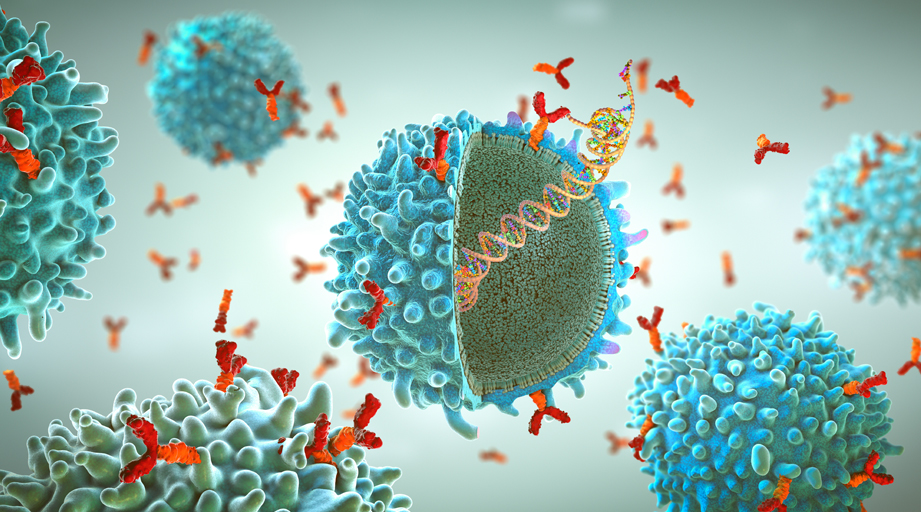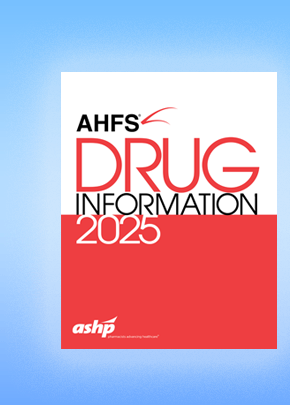

Jennifer Hockings
Jennifer K. Hockings, featured speaker at Sunday’s ASHP Summer Meetings & Exhibition session Pharmacogenomics: Improving Quality and Safety of Healthcare, was interested in research even before she was in pharmacy school, but she struggled to find a niche with a quick bench-to-bedside path. Then she had a light-bulb moment that launched her career in pharmacogenomics.
“I was at an ASHP Midyear at a student pearls session, where Kris Crews was talking about how St. Jude Children’s Research Hospital was using pharmacogenomics — and how they had a residency program in pharmacogenomics,” Hockings said. “And I knew that’s what I wanted to do. I could combine my desire for bench to bedside and being innovative and still being involved in personalized care. I completed that residency, and the next thing I knew, I was at Cleveland Clinic trying to implement pharmacogenomics.”
You can use snippet to insert predefined blocks of HTML.
Hockings, clinical specialist in pharmacogenomics at Cleveland Clinic, spoke with ASHP in advance of her Summer Meetings session to share her passion for the topic and her insights on how pharmacists can implement or expand a pharmacogenomics program. An edited transcript of the conversation follows.
ASHP: How does pharmacogenomics improve the quality and safety of healthcare at your organization?
Hockings: Here at Cleveland Clinic, our patients and their safety come first. People have variable responses to drugs, and doctors never want to prescribe a drug that’s going to end up harming a patient. Pharmacogenomic testing can help us decrease the risk of that kind of harm.
A good example is DPYD testing to identify patients who can’t tolerate standard dosages of 5-FU — fluorouracil — or capecitabine. Our oncologists had patients who had severe toxicity after receiving these drugs. Unfortunately, there are reports out there of patients like these passing away. And we didn’t want that to happen here.
When our oncologists reached out about pretreatment pharmacogenomic testing, I was really excited to be able to tell them that there’s plenty of studies indicating what DPYD variants to test for. And our lab was interested in developing those tests, so we wouldn’t have to wait weeks for the results to come back. We piloted the testing with oncologists on our main campus, and now we’ve successfully implemented it systemwide.
Guidelines from the Clinical Pharmacogenomics Consortium (CPIC) recommend reduced starting dosages of fluorouracil for patients with certain DPYD variants, correct?
That’s right. And one of our ongoing safety projects is to see if the reduced doses affect cancer progression. Because we don’t want to compromise efficacy for safety. We did some preliminary data gathering, and everything appears to be working well.
What are the biggest obstacles to starting or expanding pharmacogenomic testing in clinical settings?
Number one is getting buy-in from providers. But I really feel that barrier is coming down. Because as time goes on, there are more studies, and organizations like CPIC are making efforts to tell providers that there are evidence-based, peer-reviewed pharmacogenomic testing guidelines available to them. And I think that’s helped clinicians everywhere understand the value of pharmacogenomics.
The other barrier that I think most institutions struggle with is cost. We don’t want patients to walk away with a huge out-of-pocket cost for a test. Insurers don’t always cover the tests, and they have criteria like prior authorizations that can be challenging and may even delay therapy.
The third barrier is who’s doing the testing. Does an insurer require you to work with a specific third-party laboratory? Does the variant coverage of the test apply to your patient population? If it doesn’t, the result may report that the patient is a normal metabolizer when they aren’t, because the patient carries a variant that wasn’t included in the test. So every institution needs someone who understands the variant coverage that’s needed and who ensures providers are ordering a test that works for their patient population.
We also have to be able to accommodate test results in our electronic medical records — but not every system is designed to store genetic information. And we need the electronic records to provide meaningful information to clinicians without causing alert fatigue.
Give an example of an important drug–gene interactions pharmacists might not know about.
One of the more challenging ones is tacrolimus and CYP3A5 gene expression. CYP3A5 was mainly studied in a European Caucasian population, most of whom are CYP3A5 poor metabolizers. So tacrolimus is dosed and scheduled based on study data from poor metabolizers, which is unusual. And we’re finding that people of other ethnicities are normal and intermediate metabolizers. So if you give these patients the same dose that you give a poor metabolizer, they might have therapy failure, because they’re actually metabolizing it faster. Most of us think if you see something poorly metabolized, that’s something to be concerned about. And CYP3A5 and tacrolimus is kind of unique, because poor metabolizers get what’s considered the standard dose.
Where’s a good place, meaning a drug or condition, to start or expand a pharmacist-managed pharmacogenomics service?
The first thing is to think about what specialties will be willing to work with you. If there’s a strong behavioral health presence at your institution, and they’re already used to the concept of pharmacogenomics testing, that’s where you want to start.
For me, it started with a question from our geriatricians about improving the selection of antidepressants for their patient population. Because there a limited number of options, just due to age, the Beers criteria, and comorbid disease states and drug interactions. The pharmacists who are embedded in the clinic reached out to me. That led to pilot studies, and a recent publication, and the geriatricians asking for a collaborative practice agreement for pharmacogenomics. That’s been a wonderful success story about leveraging what you have already to further expand.
How can pharmacists better understand current guidelines for pharmacogenomics testing?
CPIC is one of the best places to start. Now, CPIC guidelines don’t tell you whether or not to test the patient. They focused on what you do once you have results. But if pharmacists are more interested in whether or not test, I think there are great opportunities through pharmacogenomics certificate programs from pharmacy organizations like ASHP that that explain the rationale for testing and what do you do once you have results.
What have you found most rewarding about working in pharmacogenomics?
It’s really hearing back from my physician colleagues and providers. And also when patients tell me, “I’m doing better.” I’ll always remember one patient; he had a past history of suicidal ideation and had a drug–drug interaction and pharmacogenomics needs. It took over a year, working with the geriatrics pharmacist and geriatrician, to deprescribe and clean up his med list. He still had symptoms of depression and anxiety but he was doing much better, compared to where he was before. He was going for counseling and interacting more with his family. So pharmacogenomics isn’t meant to find the perfect recipe. It can’t. Because there are so many factors that contribute to the response to medications. But the goal is to see if there’s more information to improve on the regimen.
What have you found most frustrating about working in pharmacogenomics?
The most frustrating part for me is when I can see that a patient may benefit from pharmacogenomic testing but may not have the resources to cover the out-of-pocket costs.
What do you hope your Summer Meetings attendees will take away from your session?
I’m hoping that they’ll come away with the idea that there really is quite a bit of evidence for pharmacogenomics in certain disease states and drug classes — and some limitations to pharmacogenomic testing, too. And I hope they learn that that there are people out there with pharmacogenomics services who are willing to help them get started if needed. What works for me is not necessarily going to work for someone else. But there are strategies they can use. And I’m hoping the biggest question they’ll ask is how to promote the utility of pharmacogenomics, and especially, the value of pharmacists being involved in and even leading pharmacogenomics implementation.








